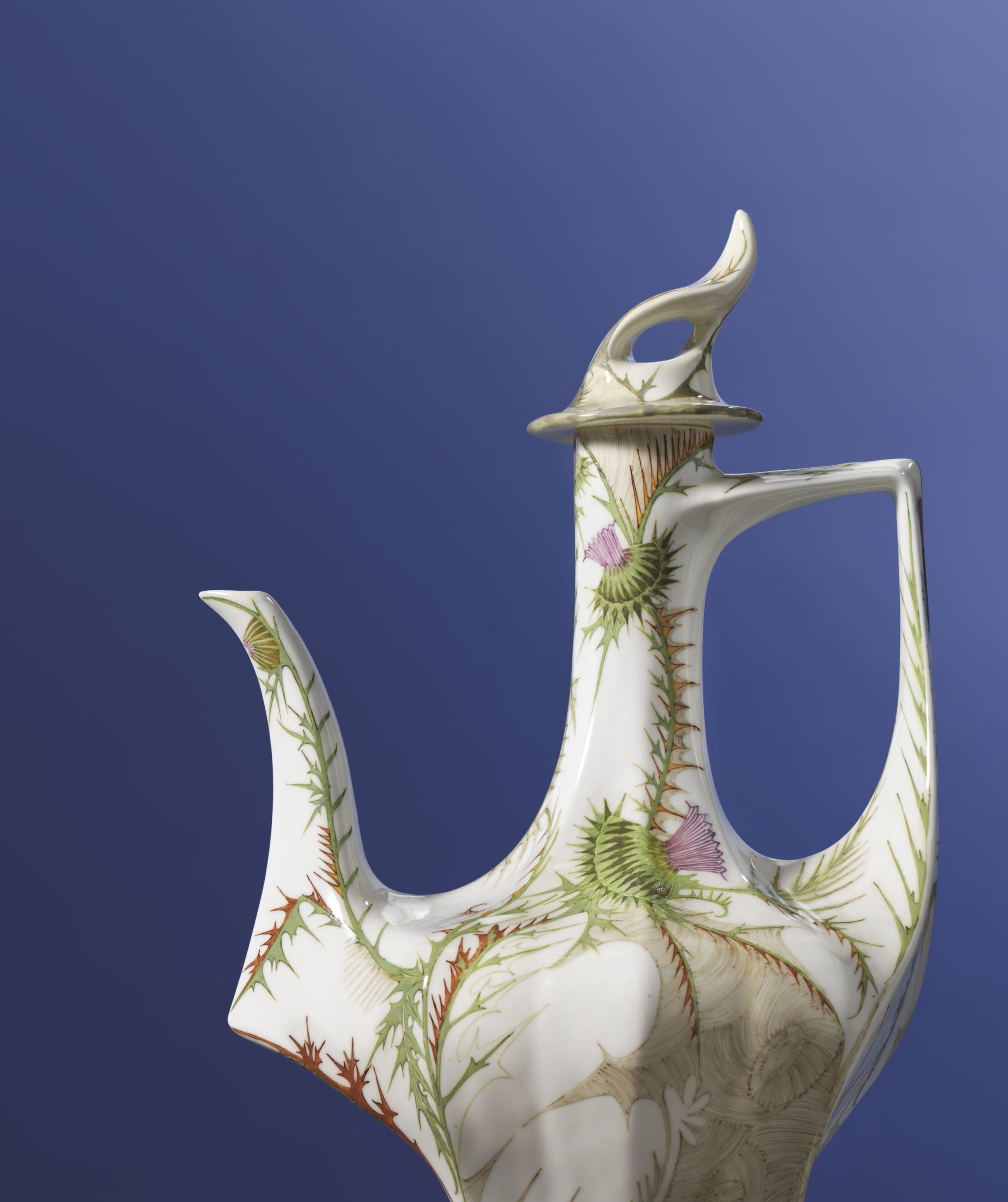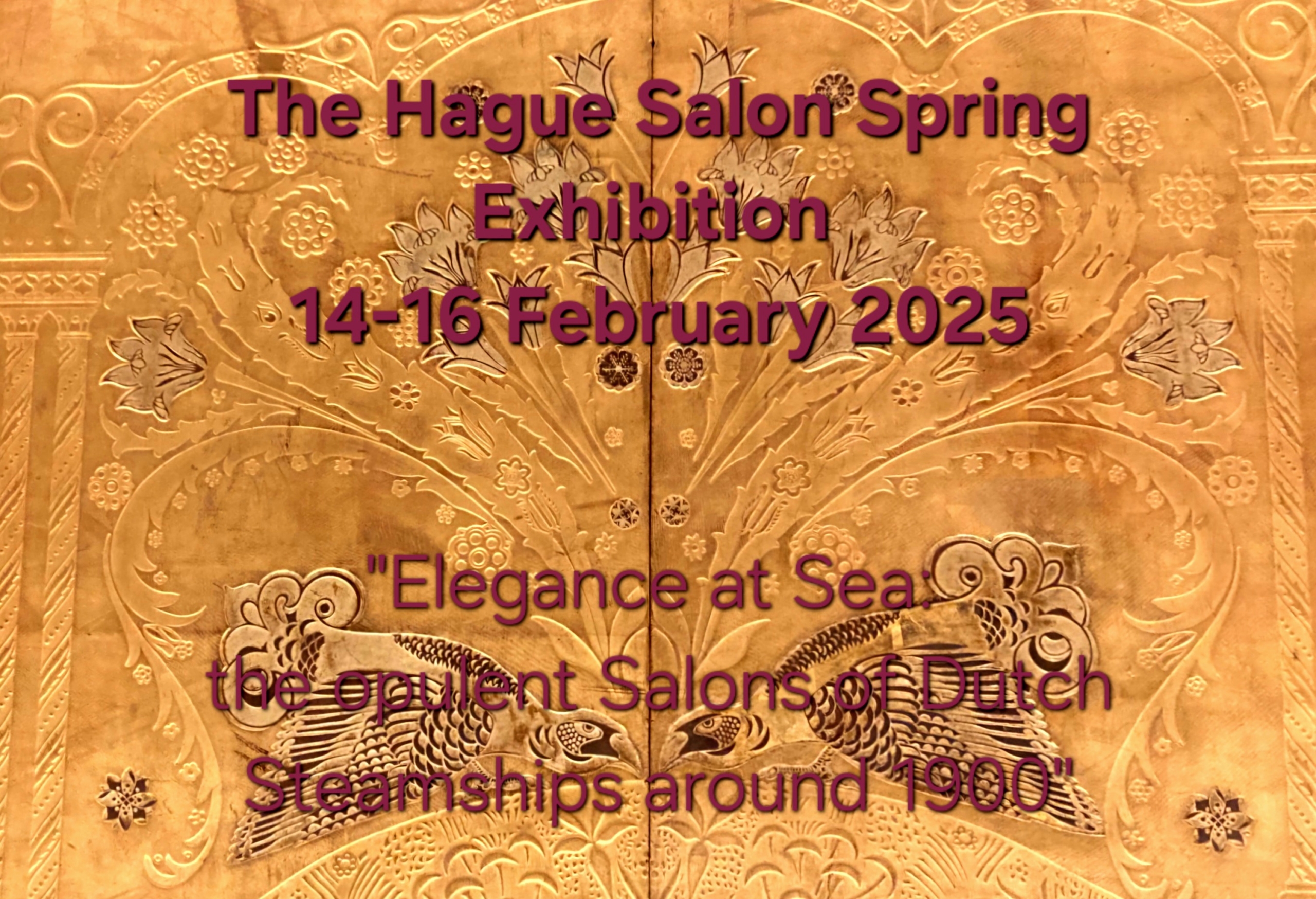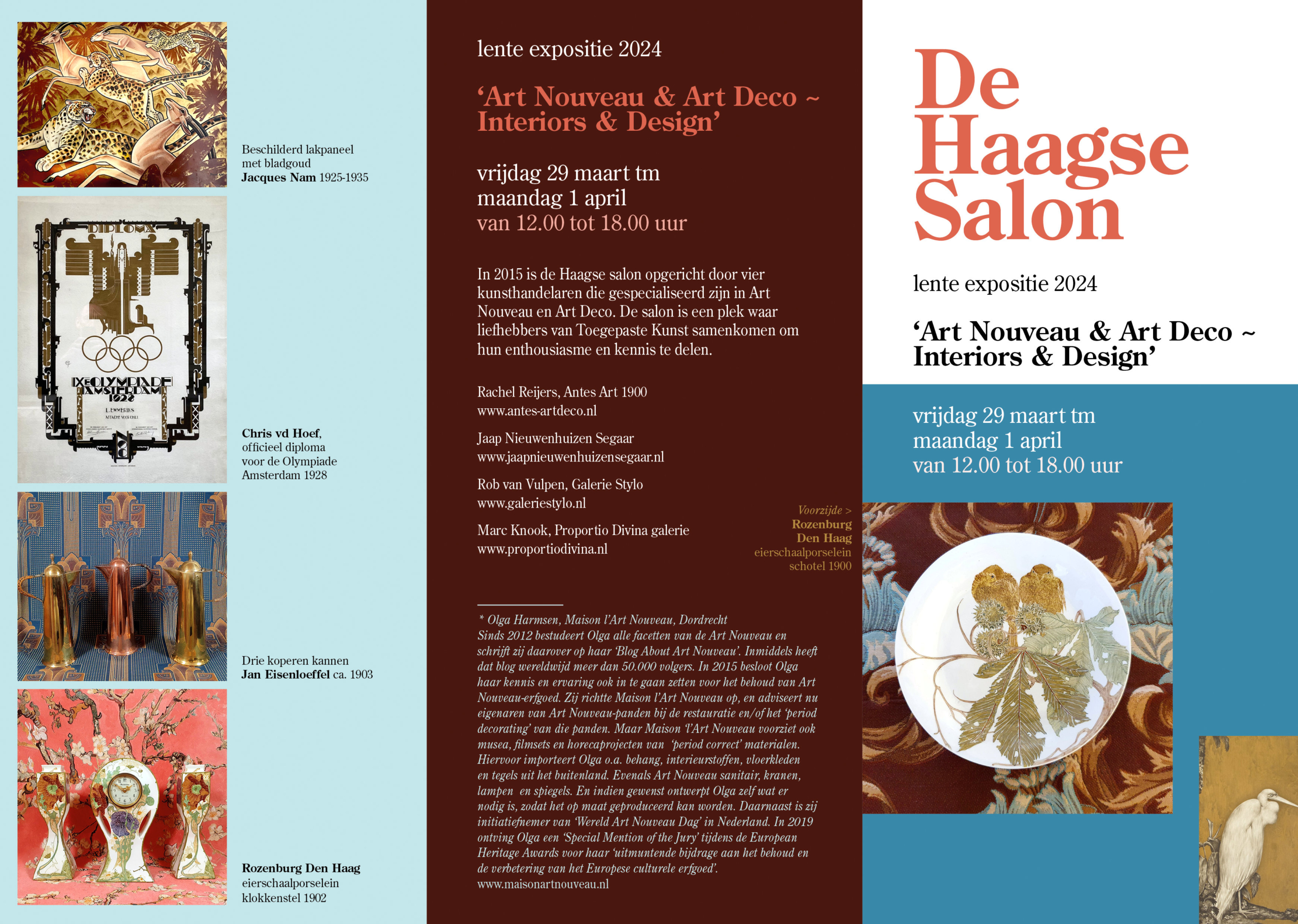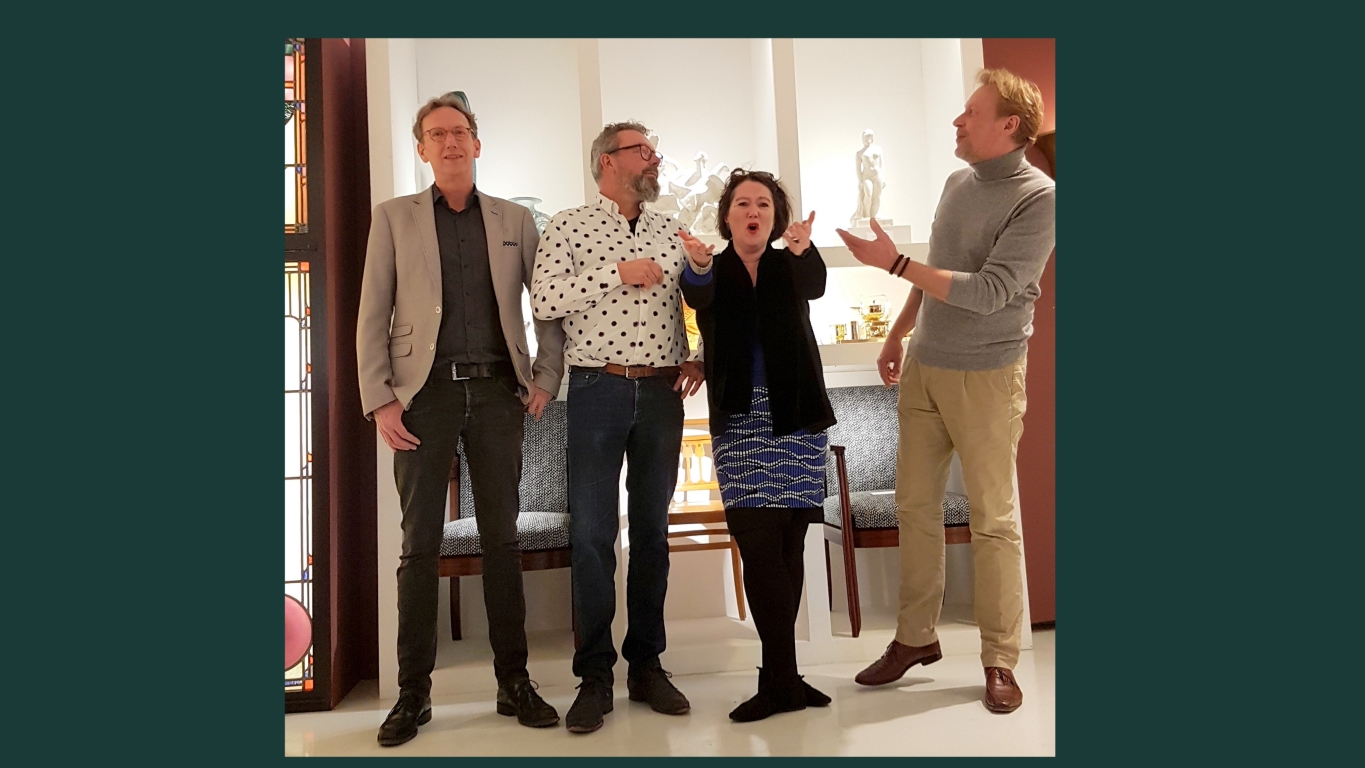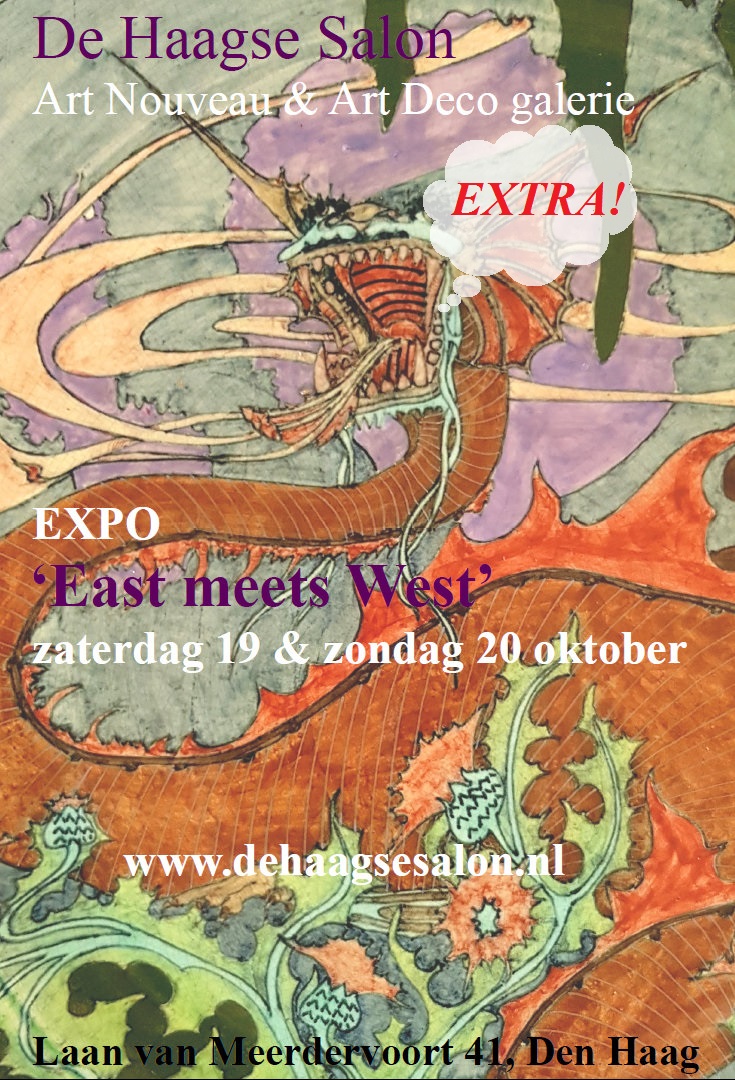[vc_row padding_top=”0″ padding_bottom=”0″ background_image=”0″][vc_column][wolf_images_gallery layout=”carousel_simple” size=”2×2″ padding=”yes” ids=”4906,4907,4904,4916,4884,4915,4914,4912,4911,4910,4909,4908,4905,4913″][/vc_column][/vc_row][vc_row][vc_column][vc_column_text]
Exhibition Gemeentemuseum Den Haag: Art Nouveau in The Netherlands, 21 April – 28 October 2018
A new art for a new, improved society. That is what many artists and designers were striving for around 1900. After a century of styles that quoted the past, a new form language emerged, based on asymmetry, curved lines and organic motifs. The Netherlands played its own unique role in this artistic quest. Although Art Nouveau fizzed with a desire to innovate and with idealism, in this country it was also a search for the authentic. In this interdisciplinary exhibition, the Gemeentemuseum will showcase fin de siècle decorative arts in a broad context, making the dynamics of the age (1884-1914) visible, tangible and recognisable in this age where authenticity and craftsmanship are once more highly prized.
The art world’s urge to innovate around 1900 coincided with major changes in Dutch society. For the first time the urban population was growing faster than the rural population. New means of communication fostered internationalisation. The first cautious steps towards wider suffrage prompted the rise of equal rights movements. And industrialisation and growing prosperity made luxury and entertainment accessible to broader swathes of the population. In the art world, particularly among designers and decorative artists, these changes led to counterreactions, including a rediscovery of nature, the countryside and the traditional.
As in neighbouring countries, the new industrial society was held responsible for the ‘decline of the arts’ in the Netherlands, too. ‘We are children of the age of the steam engine, the telegraph and electricity. We have turned our backs on the beautiful, and that is why we no longer understand it,’ decorative artist Johannes Ros lamented.
However, there were differences between the Netherlands and neighbouring Belgium and Germany. In those countries, a new expressive form language was developed to appeal above all to an emerging zest for life in a world that was gathering momentum, whereas Art Nouveau in the Netherlands was a quest for the ‘genuine’, the original and the authentic. The re-evaluation of tradition and skill, the reform of art education, the appreciation of the perfection and pristine quality of nature, and the fascination with exotic, ‘unspoilt’ cultures; here, the urge for innovation and idealism went hand in hand with a search for authenticity.
Beauty as a basic necessity
Many designers, decorative artists and art critics rejected the flamboyant form language of our neighbours. The ‘new art’, they believed, should be consistent with the national character, and the wild, swirling lines were not felt to be suited to the sober disposition of the Dutch. Strongly worded pleas, employing phrases such as the ‘neither-one-thing-nor-another voluptuousness’ of the Belgians, or the ‘dress-up art’ of the Germans, dismissed the decorative art of neighbouring countries as something that Dutch artists should take pains to avoid. Yet many designers and artists were not immune to international trends in design. Look closely, and you will see that those decorative swirls left their mark in the Netherlands, too, particularly in The Hague. And not only in architecture, but in the decorative arts too.
No matter how fiercely decorative artists and art critics might criticise each other in a theoretical sense, in practice many tastes co-existed and elements from different movements were combined. As a result, Dutch Art Nouveau took on many forms. What all artists shared was the conviction that good design was vital for a better society: to them, beauty was a basic necessity.
Interdisciplinary
After the success of Art Deco – Paris, which explored the work of French couturier Paul Poiret in a broad context, the spotlight is now on the period prior to Art Deco. Art Nouveau in the Netherlands will focus on the period between 1884 and 1914, zooming in on developments in this country. Featuring more than 350 items, including posters and book covers by Jan Toorop, screens by Jacob van den Bosch, calendars by Anna Sipkema, delicate nature studies by Theo Nieuwenhuis, metalwork by Jan Eisenloeffel, furniture by Johan Thorn Prikker and complete interiors by Karel de Bazel and Hendrik Petrus Berlage, the exhibition will present a lavish picture of the period. The approach will be interdisciplinary, exploring the movement on the basis of general themes like ‘Back to Nature’ and ‘Dreaming of the Orient’.
Besides emphasising the melding of different art forms, the exhibition will also look at individual designers, including a number of hitherto unknown artists (some of them female). Furthermore, it will focus on specific motifs and details, on the influence of design education and the connection with The Hague, an important centre of Art Nouveau in the Netherlands.
Long tradition
The Gemeentemuseum has a long tradition of collecting and presenting decorative arts from around 1900. In 1931 the museum acquired the renowned interior that decorative artist Gerrit Willem Dijsselhof designed between 1895 and 1900 for dermatologist Willem van Hoorn. Architect Berlage incorporated the room into his design for the museum, and it has been a permanent part of its display since the building opened in 1935. The first major retrospective of Art Nouveau staged in the Netherlands, Art Nouveau around 1900. Dutch Decorative Arts and Architecture 1885 to 1910 (1960), took place at the Gemeentemuseum.
A catalogue in Dutch and English will be published by WBooks to coincide with the exhibition, featuring articles by curators Jan de Bruijn, Frouke van Dijke and Madelief Hohé of the Gemeentemuseum (€24.95).
[/vc_column_text][vc_column_text]
Art Nouveau in Nederland from Gemeentemuseum on Vimeo.
[/vc_column_text][/vc_column][/vc_row]


